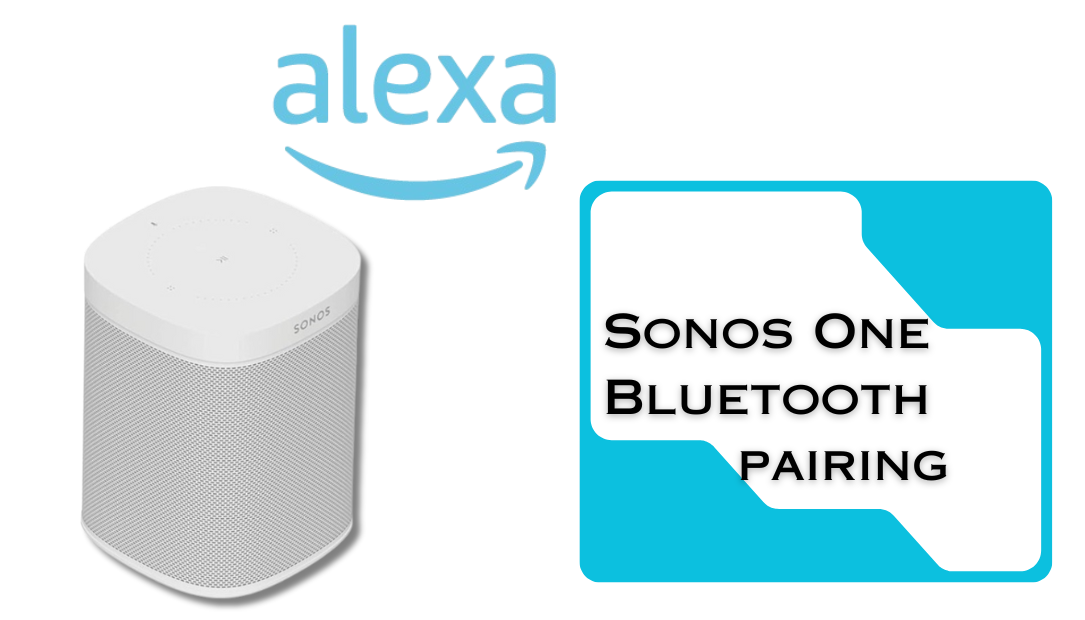
Let’s set the record straight: the Sonos One isn’t designed for traditional Bluetooth pairing as you might expect from other portable speakers. However, there are ways to achieve a similar outcome and unlock more streaming options.
After hours of research and some trial and error, I’ve finally figured out how to put the Sonos One speaker in Bluetooth paring mode, and I’m here to share exactly how to do it.
Buy Now at Amazon
Understanding the Sonos One’s Capabilities
Wi-Fi First Design
The Sonos One is primarily a Wi-Fi speaker. It’s engineered to thrive on a stable Wi-Fi connection for tasks like multi-room audio, streaming music through the Sonos app, or controlling your smart home devices via Alexa. This design allows for higher audio quality and a seamless user experience, but it means Bluetooth pairing isn’t its primary function.
The Bluetooth Confusion
Sonos does have speakers, like the Sonos Move, that feature Bluetooth capabilities. However, the Sonos One does not natively support Bluetooth for streaming music. The confusion often arises because users expect Bluetooth to be a universal standard for wireless speakers, which isn’t the case with the Sonos One.
How to Put the Sonos One Speaker in Bluetooth Paring Mode
Although the Sonos One lacks a direct Bluetooth pairing mode, there are ways to work around this limitation. Below are the methods I’ve tried and tested to successfully achieve Bluetooth-like streaming capabilities.
Method 1: Using a Bluetooth Adapter
A Bluetooth adapter can bridge the gap between your device and the Sonos One. Here’s how:
- Choose a High-Quality Adapter: Invest in a reputable Bluetooth transmitter/receiver, such as the TaoTronics Bluetooth 5.0 Adapter or the Logitech Bluetooth Audio Adapter. Ensure it supports audio streaming and has minimal latency.
- Connect the Adapter to Your Sonos System: Plug the adapter into your Sonos setup using an auxiliary cable (if you have a Sonos device that supports line-in connections, like the Sonos Five).
- Enable Bluetooth Pairing: Follow the instructions provided with the adapter to activate pairing mode.
- Pair Your Device: Go to your smartphone, tablet, or computer’s Bluetooth settings, find the adapter in the list of available devices, and pair them.
This setup essentially converts your Sonos system into a Bluetooth-compatible speaker.
Method 2: Use the Sonos Move
If you’re open to upgrading, the Sonos Move offers a built-in Bluetooth mode. Here’s how to enable it:
- Switch to Bluetooth Mode: Press the mode button on the back of the Sonos Move until the indicator light turns blue.
- Pair Your Device: On your smartphone or other device, navigate to Bluetooth settings, locate the Sonos Move, and select it.
- Stream Effortlessly: Once paired, you can stream audio directly from your device without needing the Sonos app or a Wi-Fi connection.
While this method requires purchasing a new speaker, it’s the most straightforward option for those who value Bluetooth functionality.
Method 3: Streaming via AirPlay 2
If you’re an Apple user, AirPlay 2 offers a simple alternative:
- Ensure Your Devices Are on the Same Network: Connect your iPhone, iPad, or Mac to the same Wi-Fi network as your Sonos One.
- Select the Sonos One in AirPlay: Open the app or music player on your Apple device, tap the AirPlay icon, and choose the Sonos One from the list of available devices.
- Start Streaming: AirPlay 2 lets you stream high-quality audio directly to your Sonos One without the need for Bluetooth.
Troubleshooting Common Issues
If you encounter difficulties while setting up Bluetooth or alternative streaming methods, these troubleshooting tips may help:
- Check Your Network Connection: Since Sonos speakers rely heavily on Wi-Fi, ensure your network is stable. Restart your router if necessary.
- Update Your Sonos System: Outdated software can lead to compatibility issues. Use the Sonos app to check for and install updates.
- Reset the Bluetooth Adapter: If the adapter isn’t functioning as expected, try resetting it to its factory settings and starting the pairing process again.
- Minimize Interference: Keep your devices and the adapter away from other electronics that may interfere with the Bluetooth signal.
Why Bluetooth Matters
While Sonos excels in Wi-Fi-based streaming, there are specific scenarios where Bluetooth is indispensable:
- Guest-Friendly: Visitors can connect their devices without downloading the Sonos app.
- Flexibility: Use your Sonos One with devices or apps that aren’t compatible with the Sonos ecosystem.
- Offline Use: Stream music when Wi-Fi isn’t available, such as in remote locations.
Additional Alternatives for Audio Streaming
If the above methods don’t suit your needs, consider these options:
- Voice Commands with Alexa: Use Alexa to play music directly from services like Spotify, Amazon Music, or TuneIn.
- Line-In Connections: Some Sonos speakers support line-in connectivity, allowing you to plug in external devices with an auxiliary cable.
My Journey to Seamless Audio Streaming
When I first set out to enable Bluetooth pairing on my Sonos One, I quickly realized it wasn’t as straightforward as I had hoped. However, with persistence and some creative solutions, I was able to achieve the functionality I needed.
By using a Bluetooth adapter and exploring other streaming options, I unlocked a world of audio possibilities while maintaining the excellent sound quality Sonos is known for.
Conclusion
The Sonos One Alexa-enabled speaker is an exceptional piece of technology, even without traditional Bluetooth functionality. By leveraging tools like Bluetooth adapters, upgrading to the Sonos Move, or utilizing features like AirPlay 2, you can enjoy seamless audio streaming tailored to your needs.
Whether you’re a tech enthusiast or a casual listener, understanding the capabilities and limitations of your Sonos One ensures you get the most out of your investment. With these methods, you’ll be well-equipped to enjoy high-quality audio streaming, no matter the situation.
